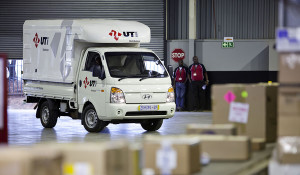If you were to be asked which commercial property market is being most affected by the Internet, a good guess would be retail says Knight Frank Head of Capitals Research Anthony Duggan
The sector is undergoing major disruption as customers increasingly choose to shop via multiple channels and, in particular, mobile devices. But while retail property is undoubtedly being affected by this huge shift in consumer behaviour, it is actually logistics that is seeing the biggest step-change in how property is used and where it is located.
The revolution is being driven by the accelerating trend for online retailing around the globe. Initially led by those markets with the deepest Internet penetration, such as China, the US, the UK and Germany, it is now gaining traction elsewhere as the popularity of e-commerce continues to grow worldwide.
A crucial part of the online sales experience for both retailers and consumers is the method by which goods reach the buyer. For the retailer, the challenge of advertising goods for sale online, managing stock, creating a global pricing strategy and, crucially, getting goods to the right place at the right time is a daunting one.
Gone are the days when products landed in the country they were being sold in, then were moved to a logistics facility before being distributed to a store network using well-understood merchandising data. Now, those same goods need to be picked, packed and delivered to a specific location at very short notice – and may then have to work their way back through that same system if they are returned by the customer.
For retailers, this means that speed of delivery has overtaken price as the main competitive battleground. Increasingly, the key to winning market share is to offer the latest order cut-off times and the earliest delivery slots. Indeed, some retailers are now offering same day delivery, enabling consumers to combine the immediacy of “bricks and mortar” retail with the convenience of ordering from home.
The upshot of all this is a new focus on reviewing and upgrading logistics networks. See by way of illustration John Lewis, one of the UK’s leading retailers, which 10 years ago was directing 75 per cent of investment towards its stores. Today, three-quarters of investment goes into distribution and IT, and just 25 per cent to stores.
This trend is fuelling strong growth in the number of logistics facilities, ranging right the way from the very large regional distribution centres where goods are stored, photographed, picked, packed and sorted, through to urban parcel delivery properties and local depots designed to enable the fast “last-mile” delivery times needed to fulfil consumer demands.
While both are compelling investment opportunities, it is in these urban, local facilities that we see the greatest potential for private investors seeking secure long-term returns and looking to tap into the opportunities created by the rise of cities and increasing urbanisation. This translates into a number of compelling investment prospects on both the demand and supply side.
First, as e-commerce grows, so too does the need to service these expanding conurbations with last-mile delivery. Retailers and parcel delivery firms will continue to develop their urban logistics offer to meet consumer demand, and the need for more appropriate facilities will grow commensurately. This is expected to drive solid occupancy rates and positive rental growth.
Second, vibrant and growing cities need a network of suppliers to function efficiently, from fresh food suppliers to car parts, trade counters and storage (to name just a few). So it is not just e-commerce driving demand for this asset class – other businesses are looking to establish bases near their customers, too.
Third, as cities grow, the pressure on land and the competition from different uses intensifies. We view urban logistics as a potentially attractive entry point for gaining exposure to land in major urban centres. Investors can adopt a strategy of buying this asset type to provide income and capital growth potential in the short to medium term, with longer term prospects for change of use, depending on local regulations, to a higher-value usage such as housing.
It is interesting in the light of all this to observe how pressure on land in urban centres is already leading to a shortage of suitable logistics facilities. A very clear example is in London, where government data shows that over half of all industrial land (a designation that includes logistics facilities) has been lost to alternative uses over the past 20 years.
This pressure on supply is stimulating occupier demand, and driving rental growth and asset valuations. With availability of housing such a hot topic for many expanding conurbations, this trend looks unlikely to reverse.
While few would claim that urban logistics is a glamorous real estate sector, it is looking increasingly attractive to private investors. Strong structural occupier demand and significant restrictions on suitable supply, combined with the opportunity to gain exposure to land in growing cities, make for a very compelling story



